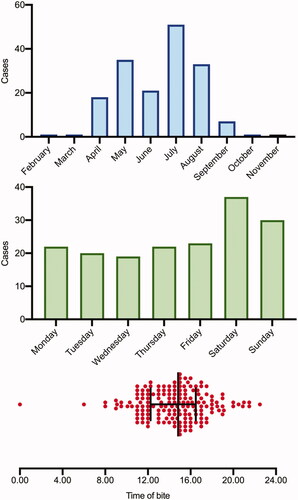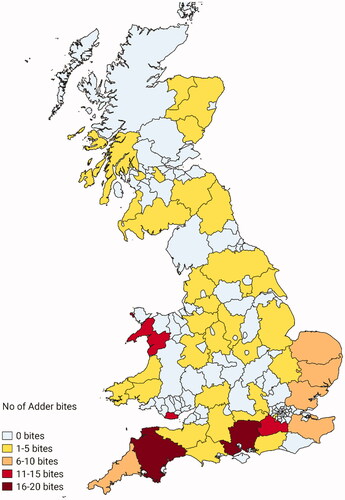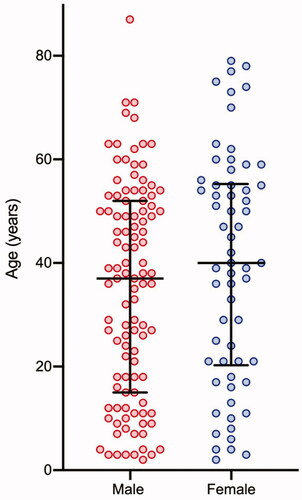Figures & data
Figure 1. Time of day (median and IQR), day of the week, and monthly distribution of 170 bites requiring antivenom.

Figure 4. Location of bites for women and men. Circle size is proportional to the number of bites at that site.

Table 1. Systemic features related to age in patients envenomed by V berus subsequently treated with antivenom.
Table 2. Effects and complications of envenoming in patients treated with antivenom.
Figure 6. Length of hospital stay for children (<16 years old), adults (16–64 years old) and adults (>64years old). Five values lie outside of the limit of the Y-axis (Children <16 years = 212h, Adults (16-64 years) = 242 h, 254 h and 261 h and Adult (>64 years) = 406 h)

Table 3. Illustrative cases of severe envenoming and learning points.



